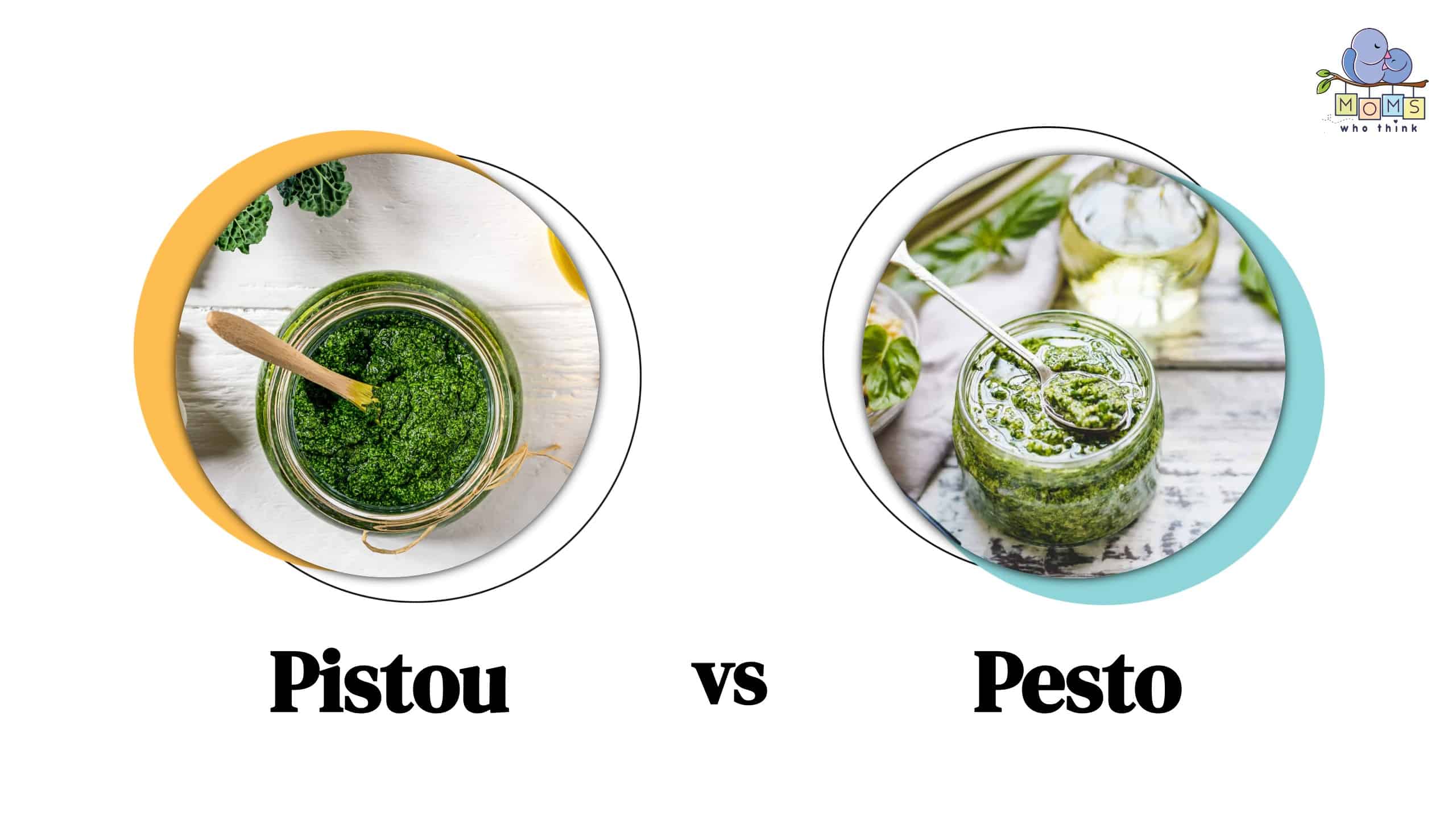Are you a pistou vs. pesto lover? If you enjoy indulging in pasta, then both sauces are a great choice. Pesto is a classic Italian sauce made of basil, pine nuts, garlic, parmesan cheese, and olive oil. The addition of pine nuts truly makes pesto unique and appetizing. Pistou, on the other hand, is a French sauce made with garlic, basil, and olive oil. It is like pesto but without the addition of pine nuts. Despite this, pistou is equally flavourful and delicious.
Both sauces are great for adding flavor to pasta dishes, salads, and other recipes. When it comes down to it, both pesto and pistou are delicious and we can't choose one over the other. In this article, we will explore the similarities and differences between these two adored sauces, from their origins and ingredients to their cooking uses and health benefits.
Pistou vs. Pesto: What is the Difference?
When it comes to flavourful herb-based sauces, pistou, and pesto are two of the most popular options. Both sauces are made with fresh herbs, garlic, and olive oil, and can add a delicious burst of flavor to a variety of dishes. However, despite their similarities, there are some key differences between pistou and pesto that set them apart. We hope this article will inspire you and help you understand which one might be the best fit for your next meal.
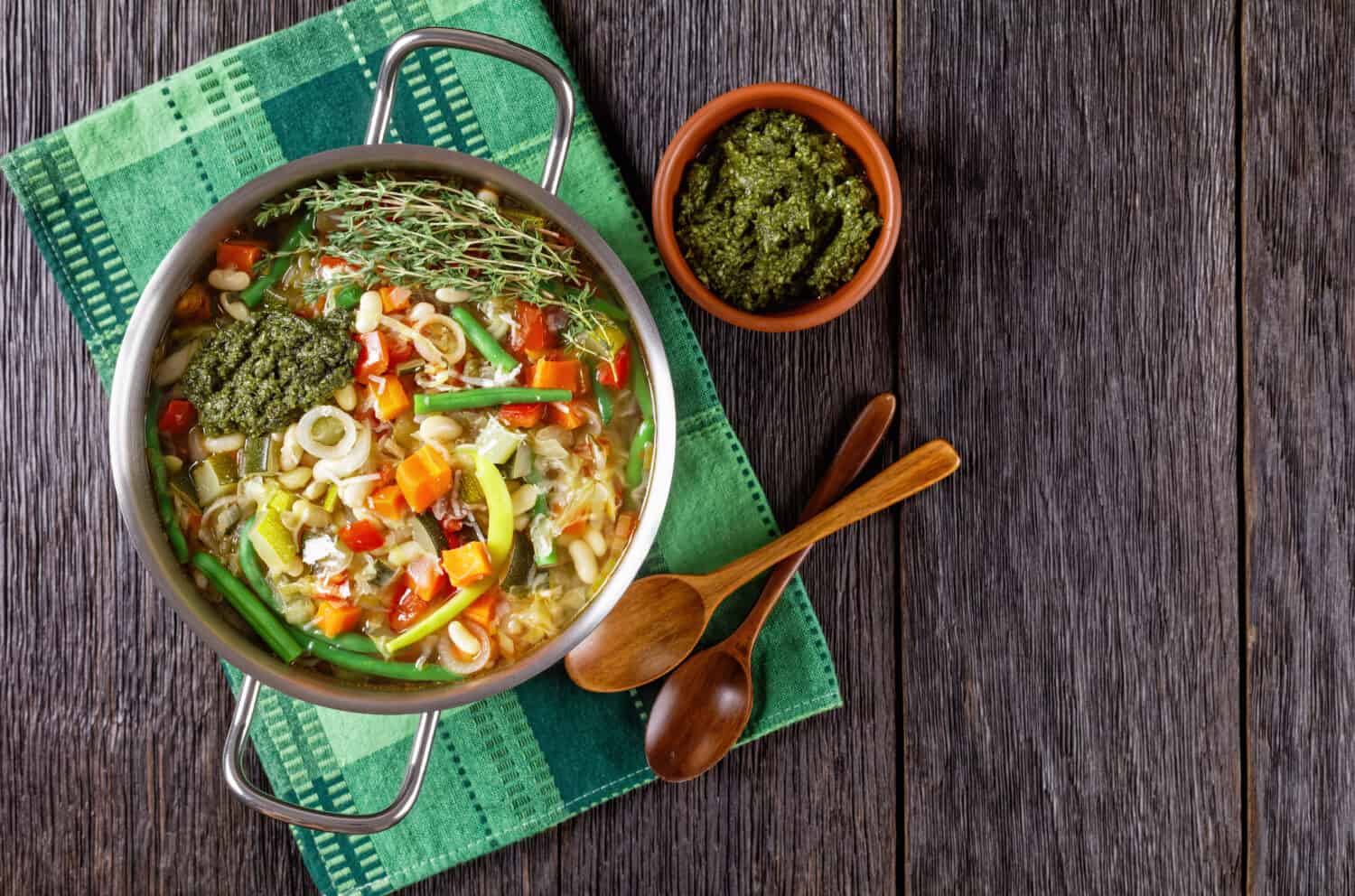
Pistou pairs well with a hearty four-bean soup on a cold winter's night.
©from my point of view/Shutterstock.com
Similarities and Differences Between Pistou and Pesto
Despite their differences in ingredients, pistou and pesto share many similarities. Both are made by blending fresh herbs, garlic, and olive oil together to create a thick and tasty sauce. They are both versatile and can be used in a variety of dishes, from pasta to soups, and can be put on sandwiches. However, there are some differences between the two. Pesto has a more complex flavor profile due to the addition of cheese and nuts, while pistou is more straightforward and allows the freshness of the basil to take center stage. Additionally, pistou is often used as a condiment or topping, while pesto is typically used as a sauce or combined into recipes.
Where Did Pistou and Pesto Originate?
Pistou and pesto both have their roots in Mediterranean cuisine. Pistou is said to have originated in the Province region of France, where it was traditionally made with basil, garlic, and olive oil. Pesto, on the other hand, is said to have originated in Genoa, Italy, where it was made with basil, garlic, pine nuts, and parmesan cheese. Both sauces have been fundamental to Mediterranean cuisine for centuries and continue to be popular around the world today.
How to Make Pistou and Pesto
To make the pistou, simply combine fresh basil leaves, garlic, and olive oil in a food processor and blend until smooth. You can also add tomato or other fresh herbs to give it an extra boost of flavor. For the pesto, start by roasting pine nuts in a dry skillet or in the oven until lightly browned, then combine with fresh basil, garlic, parmesan cheese, and olive oil in a food processor and blend until smooth. Adjust the ingredients to taste, adding garlic, cheese, or nuts as desired.
Traditional Techniques Versus Modern Variations
While both pistou and pesto have been made for centuries, modern variations may include supplementary ingredients or techniques. For example, some recipes for pistou may include tomato or other herbs like thyme or parsley. Modern variations of pesto may use different types of nuts, such as almonds or cashews, and lemon juice, and may omit the cheese for a vegan or dairy-free option. While these variations can be delicious, they may not be considered traditional.
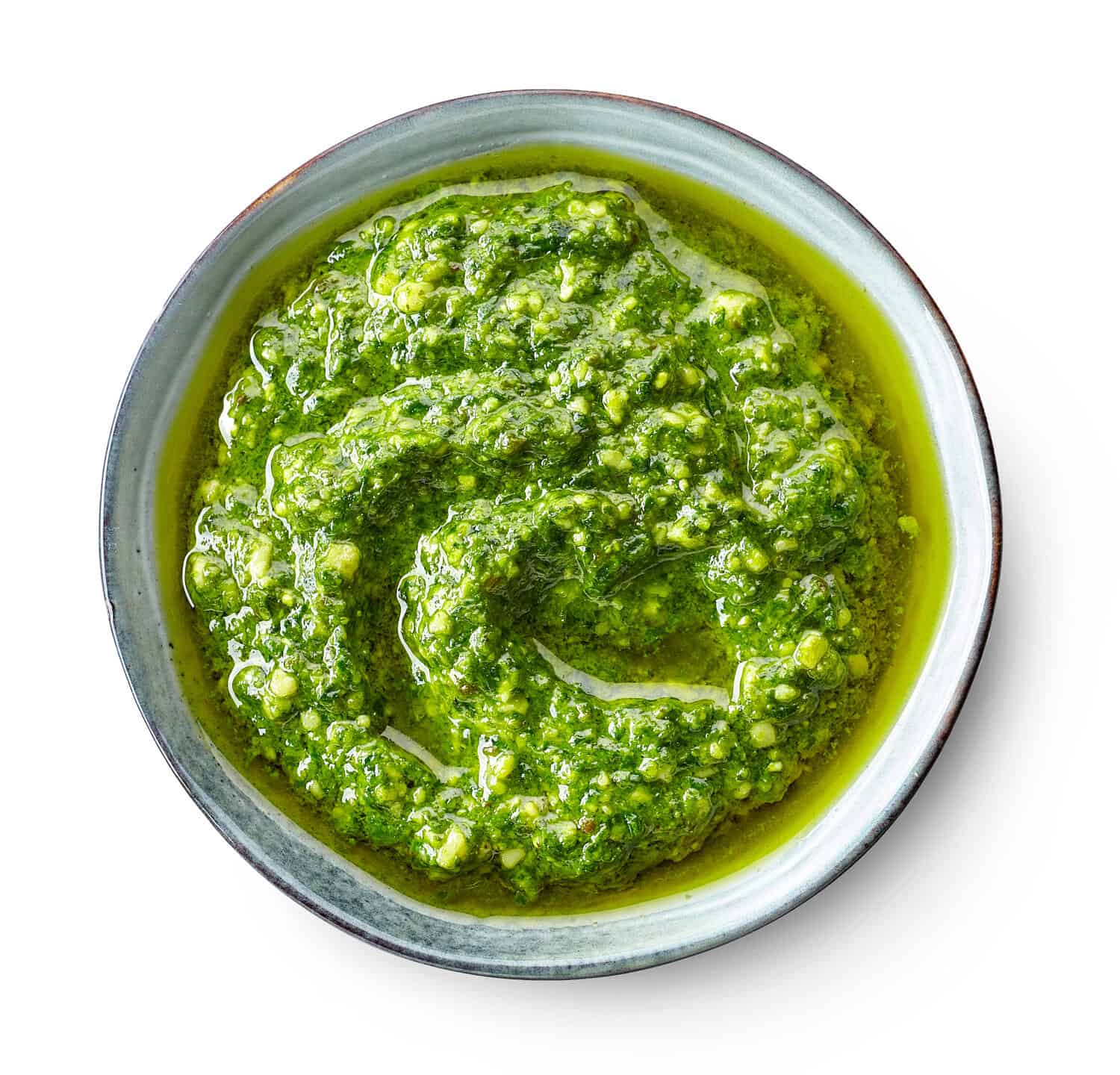
Pesto is packed with flavor and nutrition, making it an ideal addition to any meal.
©MaraZe/Shutterstock.com
What Are Some Common Pairings with Pistou and Pesto?
Pistou goes well with a four-bean salad and cherry tomatoes, grilled meats, or used as a topping for soups. Whereas pesto is commonly used in pasta dishes or spreads on a loaf of crispy bread. Both sauces pair well with fresh vegetables like zucchini, and eggplant, as well as grains like quinoa or rice. Quinoa is gluten-free and high in fiber, which makes it suitable for those who are gluten intolerant.
What Are the Nutritional Profiles of Pistou and Pesto?
Pistou and pesto are high in healthy fats and calories. Pesto (2 tablespoons) contains 160 calories, while pistou (1 tablespoon) has about 50.5 calories. However, they are also rich in vitamins and minerals. Pesto, for example, is an excellent source of vitamin K, vitamin C, and iron. Pistou, on the other hand, is high in vitamin E and antioxidants. The garlic in both sauces is also known for its immune-boosting properties, helping to keep you healthy all year round.
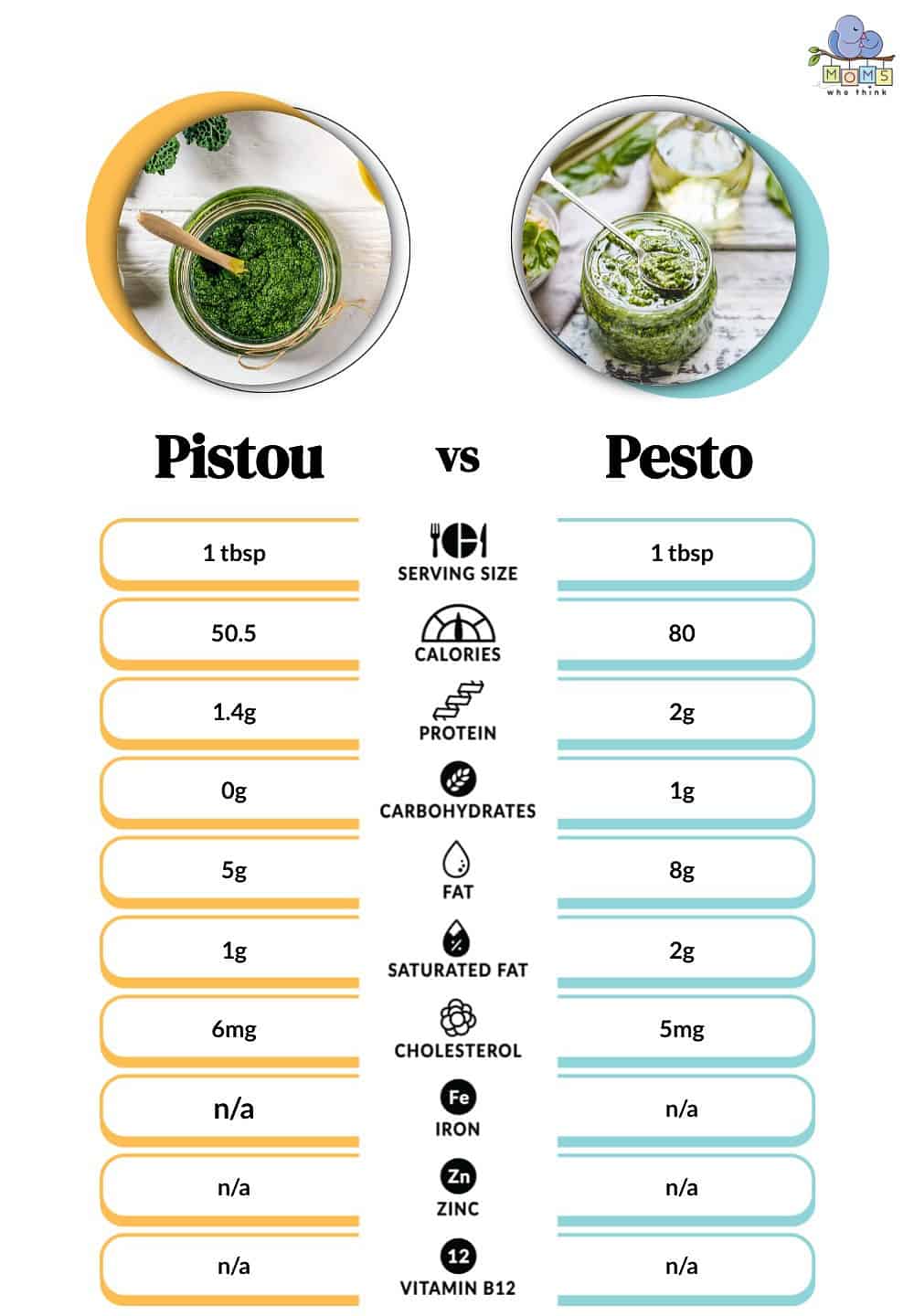
©
How Have Pistou and Pesto Been Adapted to Modern Cuisine?
In modern cuisine, both pistou and pesto have been adapted in countless ways. From using alternative nuts like walnuts and cashews to adding new ingredients like arugula or spinach, there are endless possibilities for customization. Pesto is also used as a base for pasta salads, marinades, and dips, making it an incredibly versatile sauce.
Conclusion: Which is Better, Pistou or Pesto?
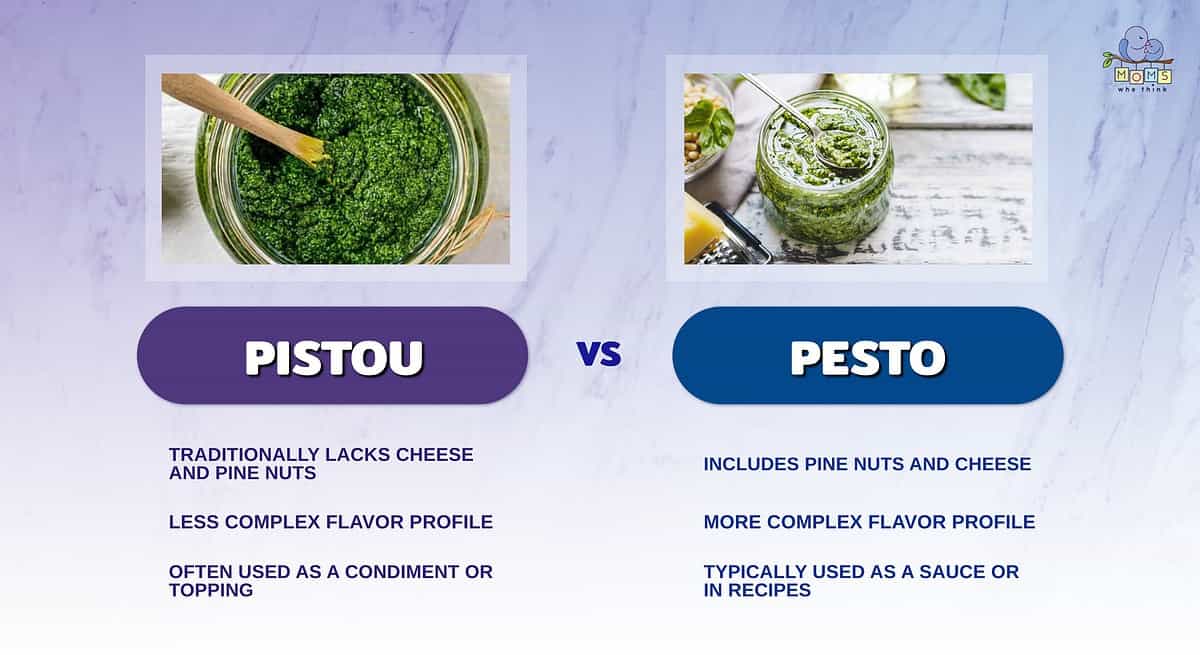
- One of the most notable differences between pistou and pesto is in the ingredients: pistou traditionally lacks cheese and pine nuts, which are central ingredients in pesto.
- Because pistou lacks cheese and pine nuts, its flavor profile is less complex than pesto's.
- The ways that pistou and pesto are typically used differ. Pistou is often used as a condiment or topping, while pesto enjoys use as a sauce or ingredient in recipes.
Pistou and pesto are both delicious sauces made with herbs, garlic, olive oil, and nuts. Both sauces are high in healthy fats and calories but are also rich in vitamins and minerals.
Choosing between pistou and pesto comes down to your personal preference and the dish you are making. Pistou is often used in soups and stews, while pesto is perfect for pasta dishes. The good news is, with so many variations and adaptations of both sauces, you can't really go wrong! In conclusion, while pistou and pesto share some similarities, they are two distinct sauces with their own unique flavor profiles and cooking uses.
Whether you prefer the garlic flavor of pistou or the nutty richness of pesto, both sauces are adaptable and delicious additions to any dish. So, why not experiment with both and decide for yourself which one is your favorite?
FAQ
What are some regional variations of pistou and pesto?
There are many regional variations of both pistou and pesto. For example, in Provence, France, pistou is often made with tomatoes and is used as a topping for soups and stews, while in Italian, pesto is made with pine nuts and pecorino cheese instead of pine nuts and parmesan.
Can pistou and pesto be used interchangeably?
While pistou and pesto share many of the same ingredients, they have distinct flavor profiles and cooking uses. Pistou is best used as a topping for soups and stews, while pesto is traditionally used as a pasta sauce or a topping for pizza. However, both can be used to add flavor and depth to a variety of dishes.
Are there any nutritional differences?
Pistou and pesto are both relatively healthy sauces, as they are made with fresh herbs, garlic, and olive oil. However, pistou is typically lower in fat and calories than pesto, as it does not contain cheese or nuts.
Can pistou and pesto be made vegan?
Yes, both pistou and pesto can be made vegan by omitting the cheese and using nutritional yeast or vegan cheese substitutes instead. It is also important to ensure that the bread used in pistou is vegan, as some recipes may call for bread that contains egg or dairy.
How did pesto get its name?
The term pesto means to grind or crush. This is a reference to how the real sauce is made, using a mortar and pestle.
Can I freeze pistou and pesto?
The best way to freeze pistou and pesto is by storing them in ice cube trays until frozen. Then transfer into freezer bags until ready to use. Both can be stored in the deep freezer for up to 6 months.
Pistou and Pesto Recipes
Print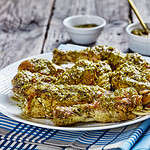
Baked Pesto Chicken
Ingredients
4 boneless skinless chicken breasts
½ cup basil pesto
2 plum tomatoes
Shredded mozzarella cheese
Instructions
1. Preheat oven to 400 degrees F. Cover cookie sheet with foil.
2. Put pesto and chicken in bowl. Toss until chicken is covered.
3. Place chicken and pesto sauce on cookie sheet, evenly distributing the sauce. Bake for 20-25 minutes.
4. Place slices of tomato on top of chicken and sprinkle with cheese.
5. Bake another 3-5 minutes.
6. Serve with a box of angel hair pasta and herbs and French bread.
